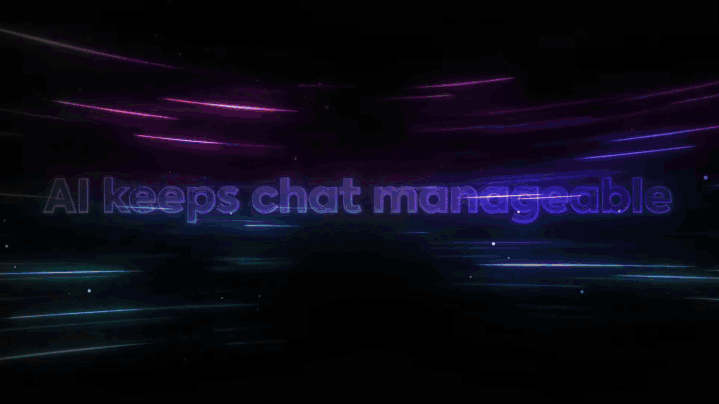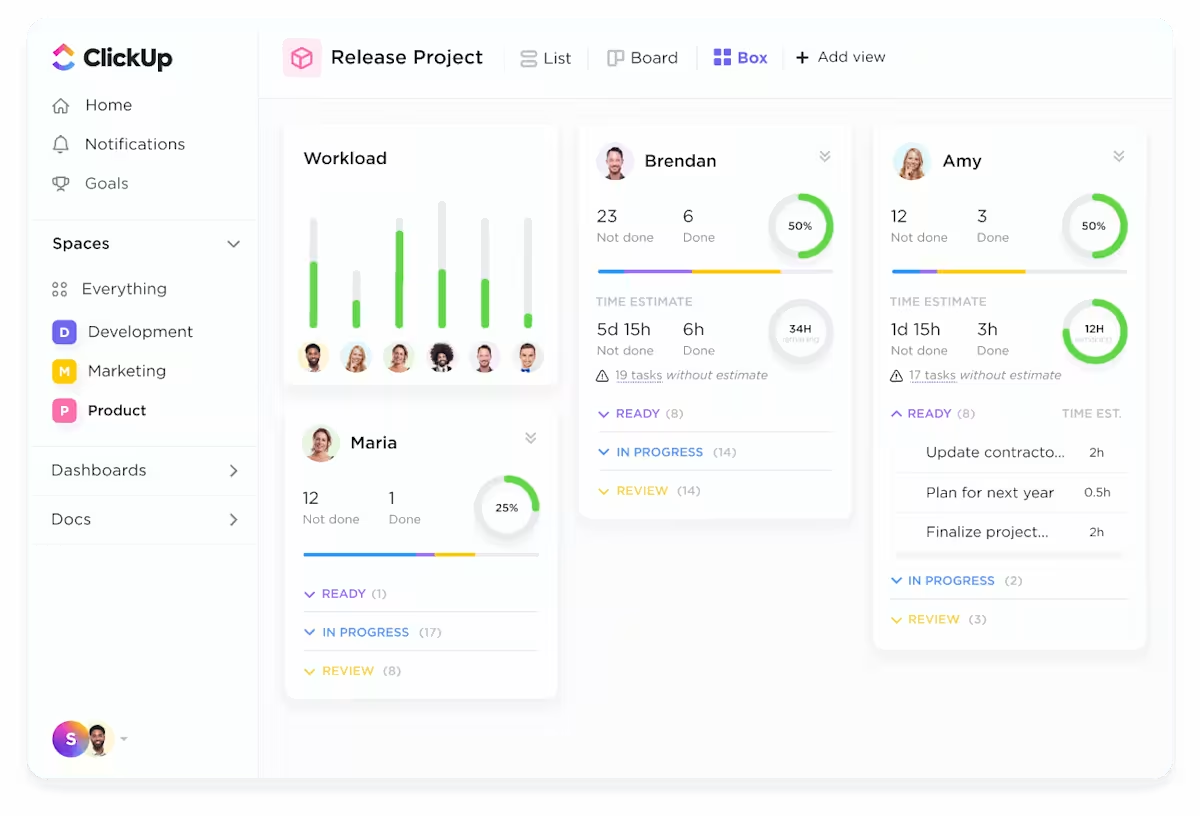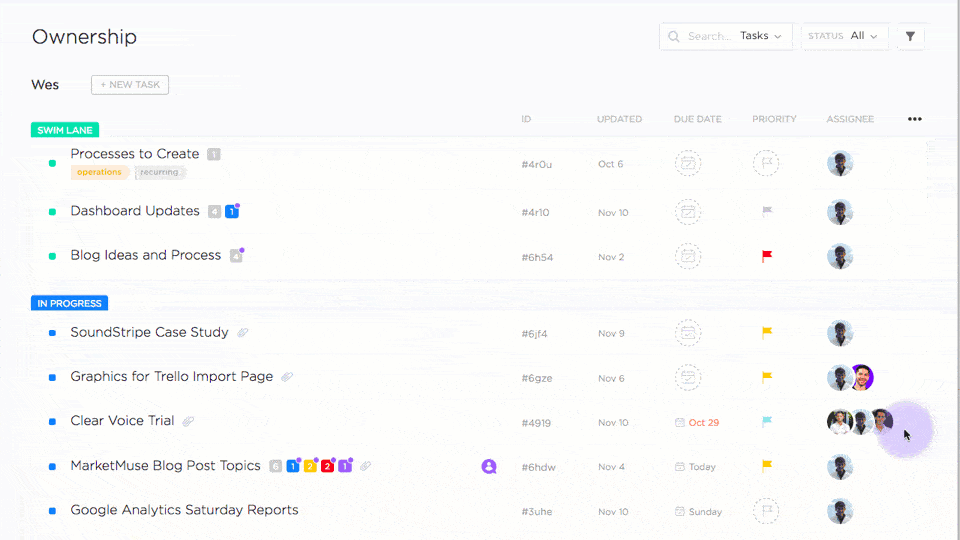Organizational Stress: Types, Signs and How to Manage It

Sorry, there were no results found for “”
Sorry, there were no results found for “”
Sorry, there were no results found for “”
If you’ve clicked on this blog post, you’re probably feeling stressed.
🌎 Fact Check: 83% of US workers say they suffer from daily work-related stress. This has an overbearing effect on productivity, creativity, and personal relationships.
With the volatile job market, demanding new roles, and remote/hybrid working models, there are too many factors that influence work today. And all of these factors can lead to organizational stress.
In this blog post, we offer a comprehensive primer on organizational stress. We discuss how to diagnose, understand, and mitigate it in your workplace.
Organizational stress is the physical, emotional, and mental strain employees suffer due to the demands of their job.
It could manifest in the form of fatigue, irritability, difficulty concentrating, inability to sleep, and other physical ailments, such as headaches, back pain, digestive issues, etc.
Types of stress
The impact of stress
Studies have repeatedly shown that organizational stress has a heavy impact on each individual’s physical and mental health.
Coping strategies and organizational stress management
Coping with stress needs a strategic approach and robust tools, including:
Organizational or workplace stress refers to the physical, emotional, and mental strain experienced by individuals due to the demands of their job. This could be due to:
We explore some of these causes in detail in the next section.
Organizational stress is something we can’t paint with broad brushstrokes. Anything from a suddenly scheduled meeting, a temperamental manager, to a plateauing career can be stressful.
However, a few instances of high activity don’t typically lead to stress. Organizational stress is often a result of physical, emotional, or mental strain over an extended period of time. To understand the entire gamut, let’s see a few types of job stress.
When there is always too much to do (or too complex tasks), tight deadlines, or monotonous work that fails to kindle any creativity, workload stress arises.
For instance, if your teams work on multiple high-priority projects simultaneously for extended periods of time, they might feel overwhelmed and overworked, leading to stress.
When there is ambiguity, conflict, or overload in job responsibilities, team members are likely to experience role stress.
For example, expecting a customer service representative to handle technical support queries without adequate training/upskilling can lead to confusion, poor performance, and frustration.
Career development stress stems from concerns about professional growth and job security. Limited opportunities for promotions, internal transfers, upskilling, or growth can be stressful for employees. The rapid growth of technology and AI also adds to the fear of obsolescence.
Change is inevitable. Often, so is the stress that goes with it. Every organization goes through bouts of new systems, technology, leadership, strategy, etc. The pressure to adapt to these changes often leads to stress.
An organization is a group of people who need to work harmoniously with one another. When there is disharmony in the form of conflicts, miscommunication, negative interactions, or broken collaboration, interpersonal stress occurs.
Economic stress arises from financial uncertainties within the organization, such as job insecurity, low pay, or insufficient resources. The most common example is when an organization announces layoffs. However, it can also occur when the markets are unstable or when an individual’s expenses go up (like when they have a child or buy a house).
While understanding stress, it is important to note that several seemingly unrelated factors can contribute to strain.
For example, not following health and safety protocols can cause one to worry about their safety, leading to stress.
Unreported or unresolved sexual harassment can be a great stressor. Here are some of the most common causes of organizational stress.
When we discussed types of stress, we explored some situations that lead to organizational stress. While a heavy workload or a sudden layoff can be a trigger, the fundamental cause is more systemic, such as:
Improper organizational planning: Any organization that doesn’t have a clear and adaptable plan is a breeding ground of stress for all employees. Common problems include promising the client unreasonable timelines, inadequate hiring/staffing, lack of a robust compensation plan, or absence of empathetic diversity initiatives.
Lack of employee welfare initiatives: To manage work-related stress, you need programs to help employees identify and manage their strains. This could be a helpline for mental health issues, bereavement leave options, non-judgmental leadership, etc. The lack of such programs invariably exacerbates work stress.
Burdening the employee: Organizations that seek to empower employees also inadvertently burden them with their own stress management.
For instance, the office not being accessible for disabled team members makes it the employee’s responsibility to ask for support. This can be physically and emotionally stressful.
Unempathetic communication: An organization is defined by how it communicates with its people, especially if it’s bad news. When communicated without empathy, clarity, or compassion, any message can lead to confusion and eventually stress.
Lack of boundaries: Fast-growing organizations, especially startups, expect employees to work long hours. Essential services providers like nurses and doctors do frequent overtime. This can affect work-life balance and affect personal life, eventually turning to chronic stress.
Ineffective leadership: Employees look to their managers for guidance and direction. Sometimes, the managers might be great individual performers but untrained in leading a team. As a result, ineffective leaders can lead to confused teams scrambling to figure things out, which causes great stress.
Whatever the type or cause of the organizational stress, the first step in overcoming it is to understand the symptoms and the real impact. Let’s see.
Similar to a physical illness, stress also needs thorough diagnostics. In some cases, you may be required to consult a physician. Often, you might be able to see the symptoms yourself.
Here are some of the commonly observed symptoms of organizational stress.
Fatigue: Employees experiencing organizational stress feel physically and mentally exhausted, disproportionate to the effort they’ve put in. Persistent fatigue reduces energy levels, making it challenging for them to remain productive and focused.
Irritability: Stress can cause employees to become easily annoyed or frustrated, even by minor inconveniences. You might observe that someone who was universally liked is suddenly seen snapping at people or sending nasty emails unprovoked.
Lack of engagement: Stressed people often take a cynical approach to work. They are not enthusiastic about new initiatives or ideas. They might also disengage from organizational activities like company offsites or other events.
Difficulty concentrating: Another common symptom of stress is cognitive decline, including the inability to focus or process information effectively. Employees may struggle to prioritize tasks, make decisions, or retain essential details.
Inability to sleep: Employees experiencing stress often have difficulty falling or staying asleep, as their minds remain preoccupied with work-related concerns. This lack of restorative sleep results in further fatigue, irritability, and a diminished mental ability to cope with workplace challenges.
Physical health issues: In advanced cases, chronic stress can manifest physically in the form of headaches, high blood pressure, muscle tension, or digestive problems. If you’re having lower back pain and your new ergonomic chair didn’t help, consider seeing a physician about stress.
These are symptoms at the individual level. If you’re thinking these are personal and only impact the employee, you couldn’t be more wrong.
Organizational stress casts a long shadow on issues that directly impact the company’s bottom line. Let’s look at some of the significant impacts below.
“Higher stress scores were associated significantly with lower productivity scores,” write the authors of a recent study. They find that this is true across race, gender, relationship status, or educational qualification. In essence, stress makes you and your employees less productive.
The American Institute of Stress estimates that one million workers are absent every day due to stress. In fact, even when employees are signed in to work, they spend over five hours a week thinking about stressors.
40% of employee turnover in the UK is due to stress. 95% of HR leaders acknowledge this—46% cite it as the reason for half their employees leaving. The cost of hiring, training, and onboarding team members to replace those who left can add up to millions of dollars.
Occupational stress costs the US $190 billion in healthcare annually. The prevalence of stress-related problems like depression, anxiety, immune system compromise, digestive issues, etc. increases insurance premiums, in addition to the loss of productivity due to sick leave or hospitalization.
At another level, stress compounds the impact of bad behaviors as well.
For instance, smoking, alcohol abuse, overeating, use of non-prescription drugs, etc. might increase, causing another wave of health problems.
Stress isn’t contagious. Or is it? One stressed employee might create an environment of hostility or irritability within their team. If it’s a manager, their stress can turn into their team’s. Over time, the organizational culture will pile up into one of stress and burnout.
If an organization is a hostile or stress-filled environment, the word is bound to spread. Through networks like LinkedIn, Reddit, and organizational review sites, potential investors, employees, and customers will know of the stress your teams are experiencing. This can have immense long-term downstream effects.
If you’re still not convinced, here are some burnout statistics to paint a complete picture.
The best way to reduce stress is for organizations to build systems designed to avoid it in the first place. This could be anything from an understanding of leave policy to managing work better with a robust project management tool like ClickUp. Let’s find out more.
When an employee doesn’t know what work they have and when, they’re likely to feel confused. This means that they show up every day waiting for the manager to give instructions. Moreover, without visibility into even short-term goals and tasks, any kind of planning is out the window.
For reducing workplace anxiety and mitigating role-related stresses, set up a task management system. ClickUp Tasks is an effective way to organize and streamline work.
If you are new to this, try ClickUp’s Task Management Template. This beginner-friendly template can help you visualize your overall project, break it into manageable tasks, optimize workflows, measure real-time progress, and more.
Basically 85% plus of workers or members of the workforce think that they’re being productive. Eighty-five plus percent of managers think that there’s more to be desired on productivity.
One of the key aspects of productivity is time. Any time spent on activities that employees don’t find valuable can add to the stress of getting work done.
For instance, hybrid teams often complain about being inundated with meetings, which results in them suffering from meeting recovery syndrome and needing to put in extra hours to complete their tasks.
As a project manager, pay attention to time.

At any given time, employees already have a bunch of tasks they’re working on or a backlog they need to clear. Make sure you account for this workload before assigning them any new work.
ClickUp’s Workload and Box views are a great way to prevent employee overload. See who is doing what, how much time they have available, when they’re on leave, etc. all in one place to manage resources effectively.

An instantly effective way to do this is with ClickUp’s Employee Workload Template. It helps you monitor workloads, understand current capacity, identify bottlenecks, and properly allocate work to employees.
Use this template as a weekly report card of your team’s work—who is doing what and at what pace. Make adjustments like adjusting deadlines or reallocating resources based on real-time insight.
Too many tasks, all being important all at once, is overwhelming and stressful. So, use a prioritization tool to relieve your teams from unnecessary stress. Use ClickUp’s Task Priorities to mark a task as “urgent,” “high,” “normal,” or “low.”

Whether it’s the announcement of a new back-to-office policy or details of a new project, make it a habit to communicate clearly and transparently.
Use long-form text: If you’re writing down a long announcement or change in policy, make it accessible and readable using a tool like ClickUp Docs. Add banners, images, text highlights, etc. to enable better recall.
Try videos: Demo-ing something or training someone? Try ClickUp Clips to effortlessly screen-capture videos.
Hold accountable: When you’re speaking to a specific individual or team, @ to tag them so you can be sure they’ve got your message.
Keep connected: Connect your messages to tasks, docs, files, and more within ClickUp Chat for a contextual conversation.
Well, this is obviously easier said than done, but we gotta try, right? Here are some ways you can implement this.
Conduct regular workshops and seminars on stress management topics, such as how to recover from burnout and how to fight mental fatigue. Invite external speakers and mental health experts to give your team members the right tools for their stress-related needs.
Actively encourage employees to set boundaries for their workday. This could be disconnecting from work emails after work hours or taking a few days each quarter for family vacations. Help them nurture positive stress or eustress—a normal and healthy response to stressful events.
The starting point for setting boundaries needs to be around managing notification overload. Enable team members to manage notifications on ClickUp by turning off notifications on mobile devices while receiving them on your office device.
All work and no play makes Jack a dull boy. Foster an environment where employees take the breaks they need to recharge. You might even set aside discretionary budgets for supporting their hobbies or some training, even if not directly related to work.
📖 Bonus read: Check out work-life balance examples.
All of the above ideas are for project managers and team leaders to implement at their level. So, what can HR and leadership do at the organizational level? Let’s find out.
The human resources (HR) and leadership have the responsibility to create strategic and organization-wide programs to mitigate stress. Here are some ideas.
Better hiring: Begin with a focus on ensuring the candidate is suited for the job to avoid role stress. Write clear job descriptions, set realistic expectations, onboard thoroughly, and set your employees up for success.
Focused leadership training: Train your leaders to manage their own stress and that of the team better. Teach them how to give feedback, communicate effectively, make difficult decisions, or resolve team conflicts without adding to the stress.
Employee feedback: Regularly understand the pulse of the organization using employee wellness surveys. Publish the findings transparently and take necessary action immediately.
Customized policies: Based on the survey results, design your policies to meet employee needs.
For instance, if teams report being overworked, focus policies on hiring, better resource allocation or automation.
Mental health priorities: Create policies and initiatives that prioritize mental health, such as Employee Assistance Programs (EAPs), flexible work hours, wellness days, stress management programs, etc. Ensure that the insurance plan has provisions for mental health-related issues.
Collaborate with non-profits or healthcare providers to offer counseling or even medical support for mental health issues.
Open conversations: Be open about discussing mental health problems within the organization. Create an environment where an employee can transparently discuss being stressed without judgment.
Support for everyone: Make sure that every employee’s voice is heard and needs accommodated.
For instance, you might have only a couple of employees with disability. Even then, create policies and systems to ensure they are included and their unique needs are met.
If 83% of workers are stressed daily, it is certainly a matter of grave concern. Yet, as humans, we seek to brush stress under the carpet and carry on as though it doesn’t matter. Organizations do the same, too—until they realize the real financial, reputational, and human cost of stress.
Organizational stress is complex and multifaceted. Working long hours regularly can lead to sleeplessness, anxiety, broken relationships, and eventually affect productivity and creativity.
The inability to take a few days off to refresh can be stifling and affect employee well-being. Being given work you’re not qualified/prepared for can lead to intense self-esteem issues. And each of them compounded and cost $300 billion in losses to the US industry.
On the other hand, addressing excessive stress needs a systemic and strategic approach. One flexible leave policy or a free mental health helpline won’t cut it.
In fact, the best way to manage stress is to fundamentally change the way we work—to effectively adapt to a virtual workspace that serves us all.
A free project management software like ClickUp is a good starting point. With ClickUp, you can manage time, resources, workloads, and tasks. You can publish policies transparently for employees to access anytime from anywhere.
You can automate repetitive processes and manage notifications. You can also set realistic goals and achieve them without stress.
© 2025 ClickUp